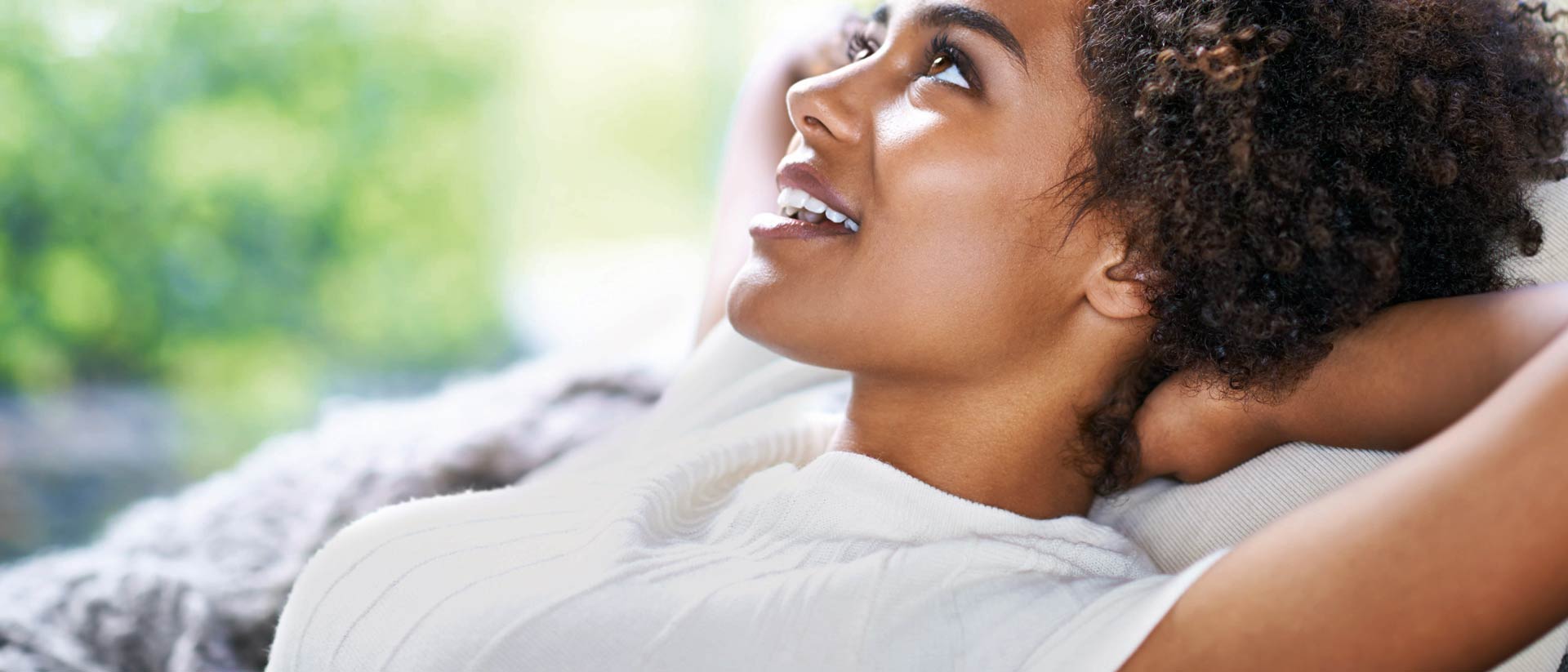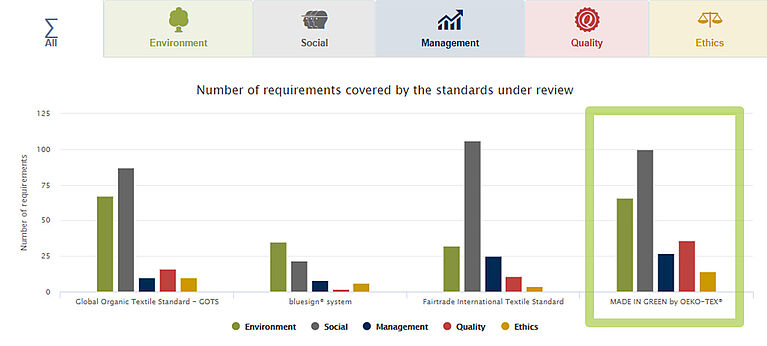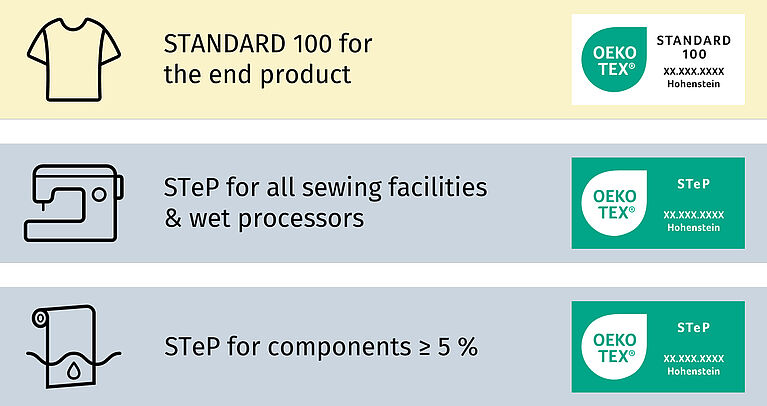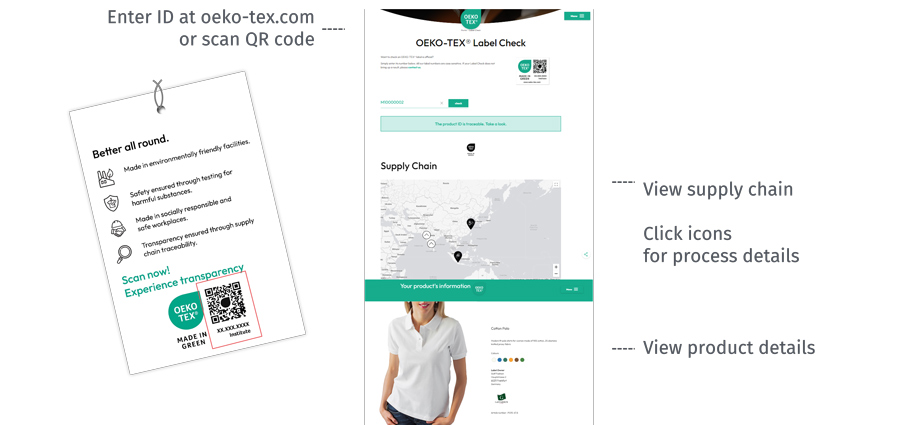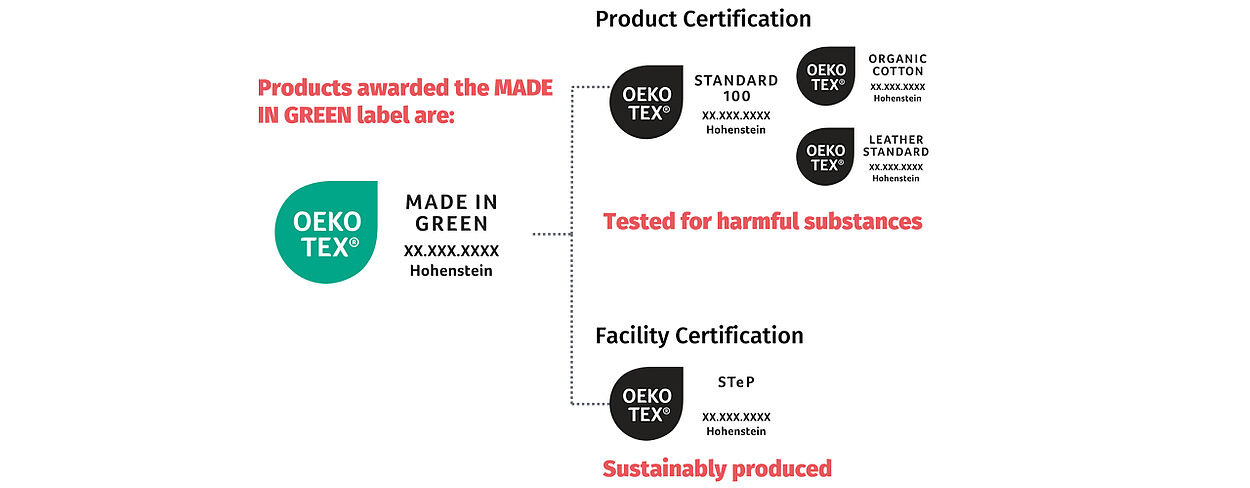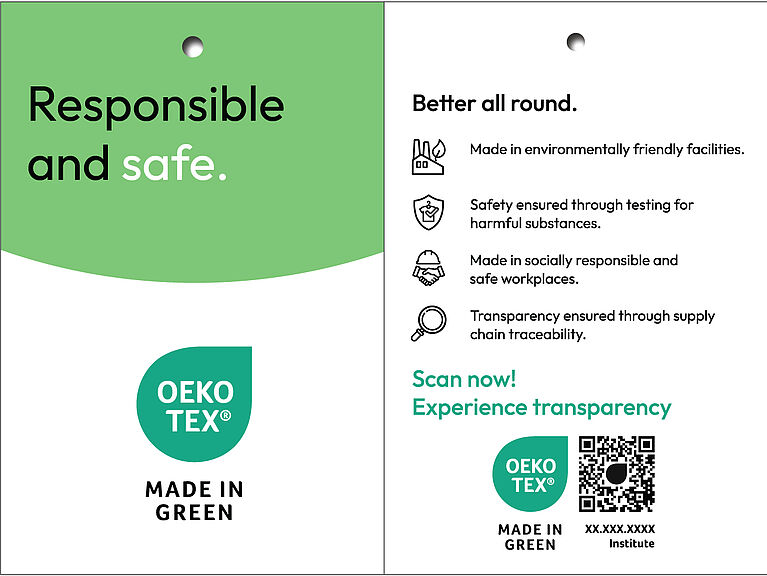Is MADE IN GREEN the best label for sustainable textiles?
Ask the International Trade Centre: The Standards Map analyzes over 260 sustainability standards for in-depth comparisons.
View this map on sustainabilitymaps.org.
The Standard Map's comparisons are based on data from the International Trade Centre (ITC), the development agency of the World Trade Organization (WTO) and the United Nations (UN). The ITC is supported by USAID, the EU Commission, the German BMZ and other international organizations.
What are the MADE IN GREEN label conditions?
Any company in the textile or leather chain can apply to use the MADE IN GREEN product label.
MADE IN GREEN labeled products must meet the following requirements:
- Each component that makes up at least 5% of the total weight of the labeled product must originate from production facilities that have been certified with OEKO-TEX® STeP
- All cut and sew and wet-chemical processing must take place in a STeP certified facility
- The product must be OEKO-TEX® STANDARD 100, ORGANIC COTTON or LEATHER STANDARD certified
Interim products that are sold to companies within the supply chain must be certified with OEKO-TEX® STeP and meet all the criteria mentioned above.
What is the MADE IN GREEN Product ID?
The product ID provides information about where a product was manufactured and shows that it has been tested for harmful substances and produced in accordance with OEKO-TEX® principles.
Who can apply for MADE IN GREEN?
Any company within the textile and leather value chain can apply for the MADE IN GREEN label.
The product must be STANDARD 100, ORGANIC COTTON or LEATHER STANDARD certified and produced in a STeP certified facility.
Manufacturers, converters, wholesalers, retailers and brands that fulfill the criteria are allowed to use product label.
Non-producers can obtain labels without their own certifications if their suppliers fulfil the MADE IN GREEN conditions. Brands and retailers can re-label MADE IN GREEN products from suppliers under their own company name.
How much do MADE IN GREEN labels cost?
There are NO application or license fees for MADE IN GREEN labels. Access to the myOEKO-TEX® portal is also free of charge.
How can I apply for MADE IN GREEN?
- Application/Registration
Register on the myOEKO-TEX® platform to gain access to the database - Connection
After registration, find suppliers and send requests to confirm connections (within myOEKO-TEX®) - Article Definition
Define the MADE IN GREEN qualified product and its individual components - Label Generation
The MADE IN GREEN label can be generated in the myOEKO-TEX® portal - Labeling/Marketing
Label products with MADE IN GREEN and use the label for advertising
How long does it take to earn OEKO-TEX® MADE IN GREEN?
A MADE IN GREEN label can be issued immediately. The process usually takes a few days if suppliers respond quickly to connection requests and the label conditions are fulfilled (the applicable certificates - STANDARD 100, ORGANIC COTTON, LEATHER STANDARD, STeP - are valid).
How do you check a MADE IN GREEN label?
Each MADE IN GREEN label includes a unique product ID. Anyone can verify the label's authenticity by entering the product ID in the label check on OEKO-TEX.com or scanning the code. Companies using the MADE IN GREEN label can also use myOEKO-TEX® to validate labels.
How long is a MADE IN GREEN label Valid?
The MADE IN GREEN label requires annual renewal.
A purchaser of a MADE IN GREEN labeled product must be able to trace the information for five years. If there are any changes to the supply chain that relate to the label requirements, a new label must be issued.
How do MADE IN GREEN & STANDARD 100 work together?
Products that have been tested for harmful substances can be labeled with STANDARD 100, ORGANIC COTTON or LEATHER STANDARD.
OEKO-TEX® MADE IN GREEN is a traceable product label for textiles that have been tested for harmful substances plus manufactured with environmentally friendly and socially responsible production processes.
What does the MADE IN GREEN label communicate?
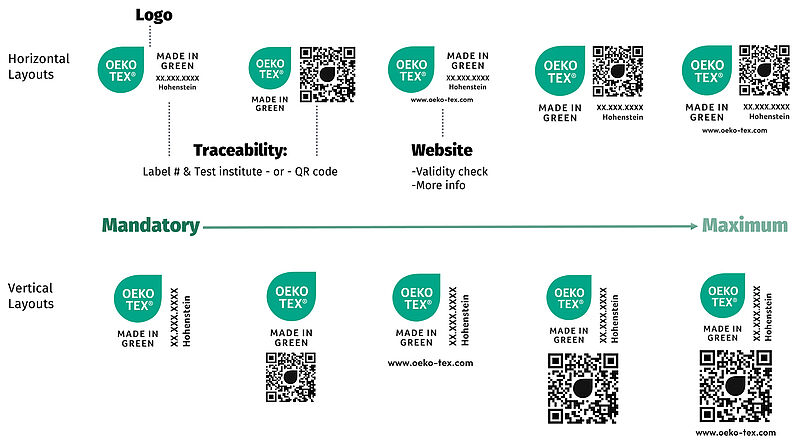
Is there a MADE IN GREEN Hangtag?
Label owners can download MADE IN GREEN hangtags from myOEKO-TEX® - customized with the unique product ID and institute - and available in several languages.
How do I get the Climate Pledge Friendly label on Amazon?
OEKO-TEX® MADE IN GREEN and STANDARD 100 are trusted certifications for the Climate Pledge Friendly program on Amazon.
To earn the Climate Pledge Friendly label for products sold on Amazon:
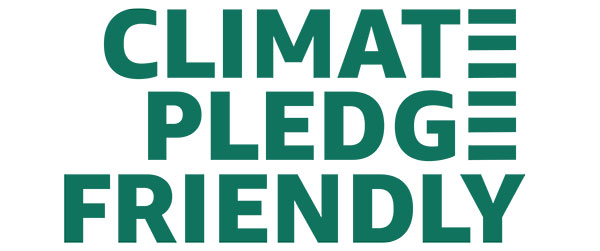
- Complete the Climate Pledge Friendly template (.csv-file)
- Submit the ASINs to Amazon's Vendor Central or Amazon's Seller Central
- Once certified ASINs are validated, Amazon will recognize in the Climate Pledge Friendly program (~10 business days)
How does MADE IN GREEN relate to the Green Button?
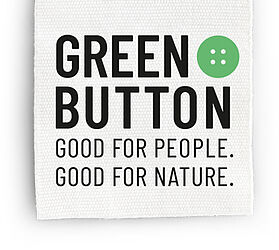
The Green Button is the German government's certification for sustainable textiles.
OEKO-TEX® MADE IN GREEN is one of the few labels that fulfills the certification's product criteria.
Hohenstein is an authorized certification body for the Green Button.
How does OEKO-TEX® ensure consistent quality?
In addition to internal quality assurance programs, the certified company agrees to the declaration of conformity during application. This agreement allows OEKO-TEX® institutes to conduct control tests.
Each year, Hohenstein control tests at least 25% of certified products. Previously certified materials are re-tested during certification processes for downstream products. Random samples of OEKO-TEX® certified products are purchased from stores and tested again in the laboratory. In addition, independent auditors commissioned by OEKO-TEX® conduct unannounced site inspections to assess on-site quality assurance in the facilities.
